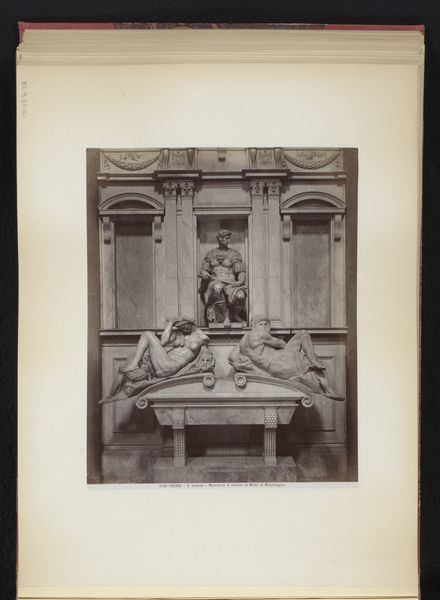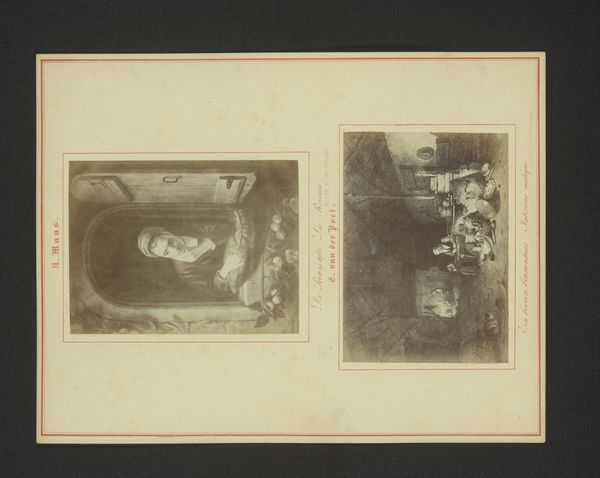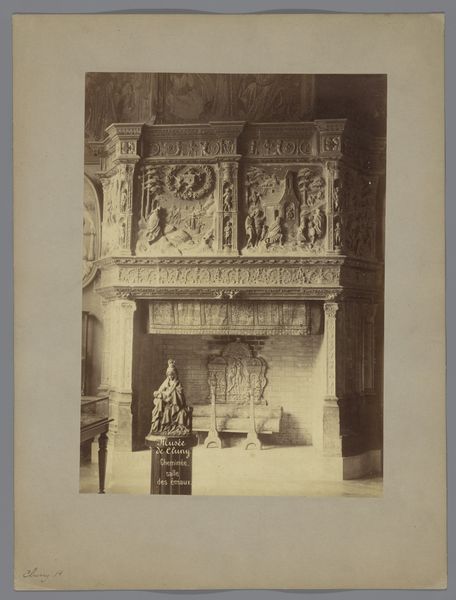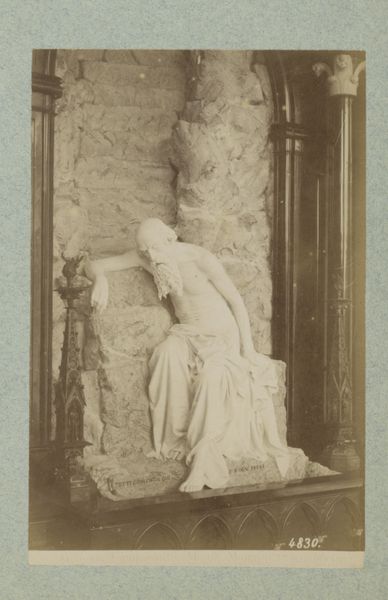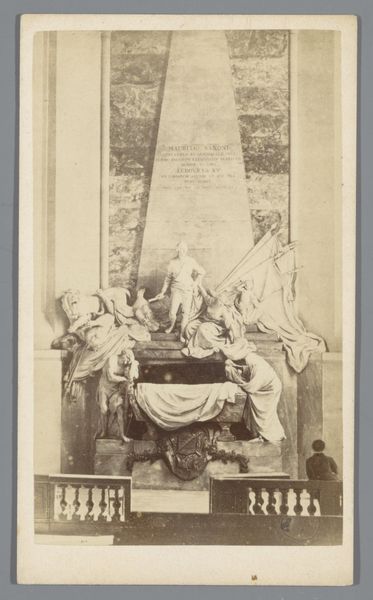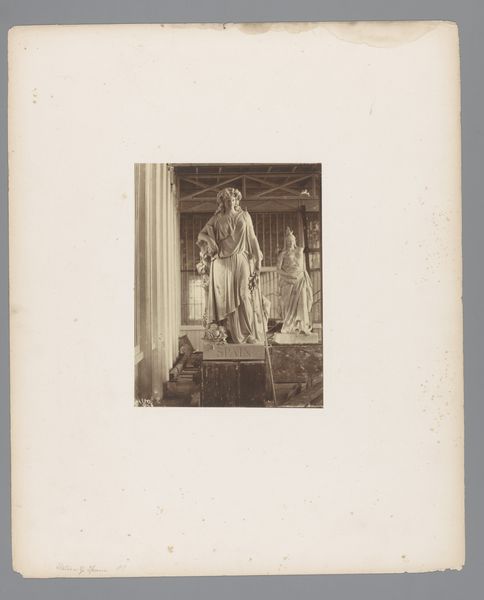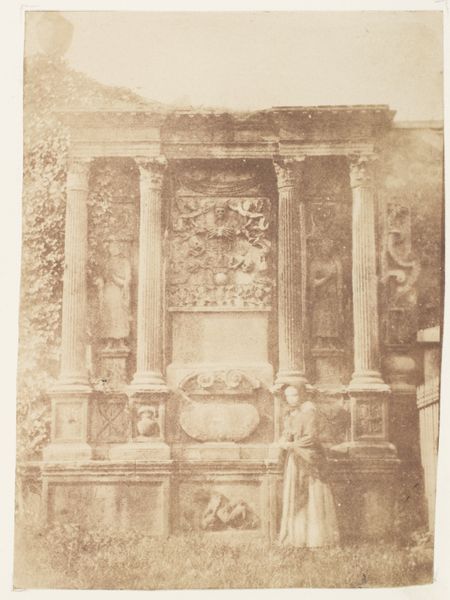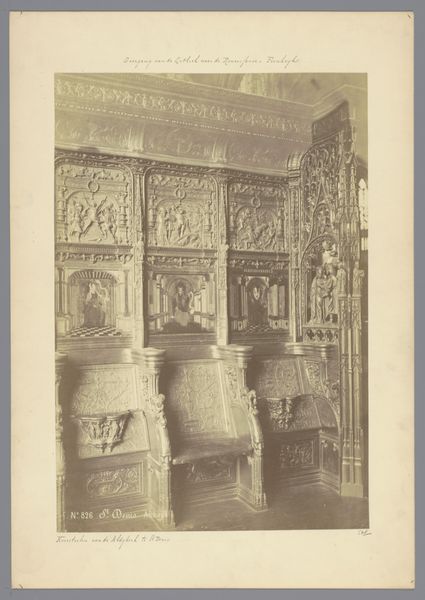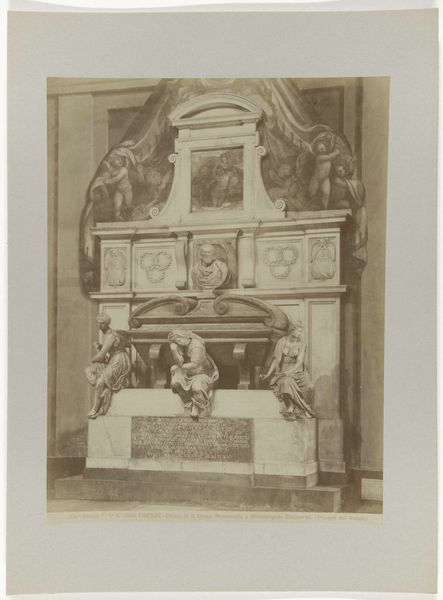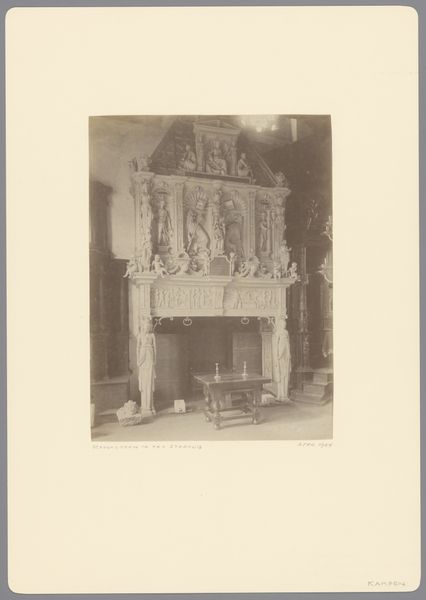
Graftombe van Carlo Rezzonico door Antonio Canova in de Sint-Pietersbasiliek in Vaticaanstad, Italië 1851 - 1890
0:00
0:00
Dimensions: height 356 mm, width 254 mm
Copyright: Rijks Museum: Open Domain
Curator: This photographic print, dating from between 1851 and 1890, captures Antonio Canova’s tomb of Carlo Rezzonico. The sculpture resides within St. Peter's Basilica in Vatican City. Editor: The textures are striking, even in this older photo. The smooth, polished surfaces contrasting with the rough, unfinished areas... I find myself focusing on the process of carving and refining. Curator: Indeed. Consider the formal language. We see Canova's clear debt to Neoclassicism and a deliberate return to Renaissance ideals. The pyramidal composition provides stability, and the figures embody a serene idealism. Observe the idealized form of the Pope. Editor: I’m also wondering about the labour required. The extraction of marble, the transportation, the sheer physical effort demanded by such a massive undertaking. These processes add to my appreciation for the piece, considering what material actually has gone through, to result on the creation. Curator: Certainly. Semiotically, each figure serves as an emblem: The kneeling Pope embodies piety; the allegorical figures of Virtue represent hope and strength; and the lions, power. How these icons resonate in relation to sculptural form and historical narrative is essential to decode. Editor: I’m just thinking of the original conditions for this object: the quarries where marble was cut, the workshops where it was refined. How that whole chain affected the piece in a broader sense, impacting the way we view it today and perceive its textures in reproduction. Curator: Precisely, Antonio Canova, deeply moved by classical Antiquity, strived to achieve a timeless monument—a testament to the enduring values of faith and virtue, synthesized with near perfect anatomy and controlled linear harmony. Editor: So, by analyzing both material and execution, we perceive a complete historical and manufacturing trajectory reflected in a unique vision of the original creator, which gives so much value to the artwork itself. Curator: Indeed. The photograph is just a medium, but helps to recognize all the characteristics of a symbolic historical object in the Basilica. Editor: A layered experience indeed, appreciating both its physicality and its conceptual framework, through the simple act of taking a picture and portraying its complex form.
Comments
No comments
Be the first to comment and join the conversation on the ultimate creative platform.
